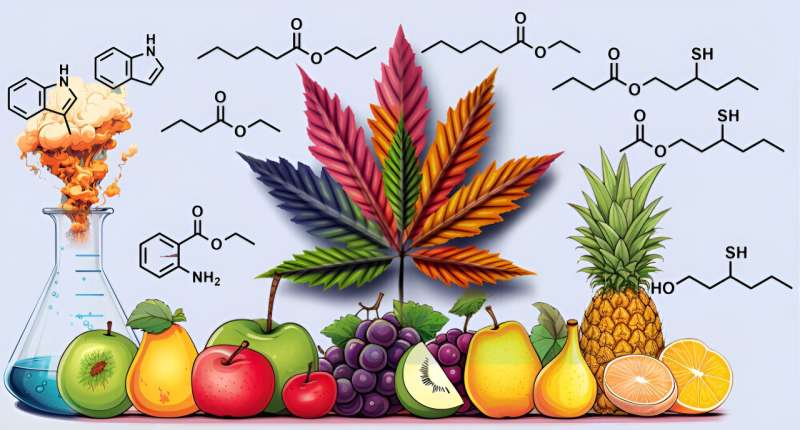A team of chemists at terpene distributor Abstrax Tech has conducted an extensive study of the molecules that are likely involved in giving cannabis its unique smell. In their study, published in ACS Omega, the group used a variety of tests to look for and identify the molecules that give cannabis its unique scent.
Marijuana, or cannabis, is known for its unique and interesting effects on the human brain—and for its unique scent. Some have described it as “skunky.” Prior research and anecdotal evidence have also shown that different cannabis plants can give off different aromas, leading some to give them descriptive names. Prior research has also suggested that thiols, types of volatile sulfur compounds (VSCs), are mainly responsible for giving cannabis its unique smell.
In this new study, the research team at Abstrax suspected that more compounds or molecules are involved and launched a research effort aimed at identifying them.
The work involved studying cannabis specimens using a variety of techniques such as mass spectrometry, gas chromatography and flame ionization detection. Each allowed a different perspective on the compounds present in cannabis buds. The researchers found that a molecule called 3-methyl-2-butene-1-thiol (321MBT) appeared to play a prominent role in odor production.
They also found that the buds had different classes of VSCs that influence the smells given off by a given planet, primarily those associated with a tropical, fruity, sweet aroma. They also found that a highly pungent compound called skatole played a role in the savoriness of the aroma.
The team concludes that while terpenes (essential oils) do play a role in odor characteristics, it is the combination of 321MBT and various VSCs that most contribute to the distinctive odor of marijuana. They note that 321MBT is the same molecule that gives warm beer and skunk spray their distinctive smells. They suggest that by identifying the components that contribute most strongly to cannabis aroma, it should be possible to alter the proportions to create products with custom smells.
H/T: phys.org



